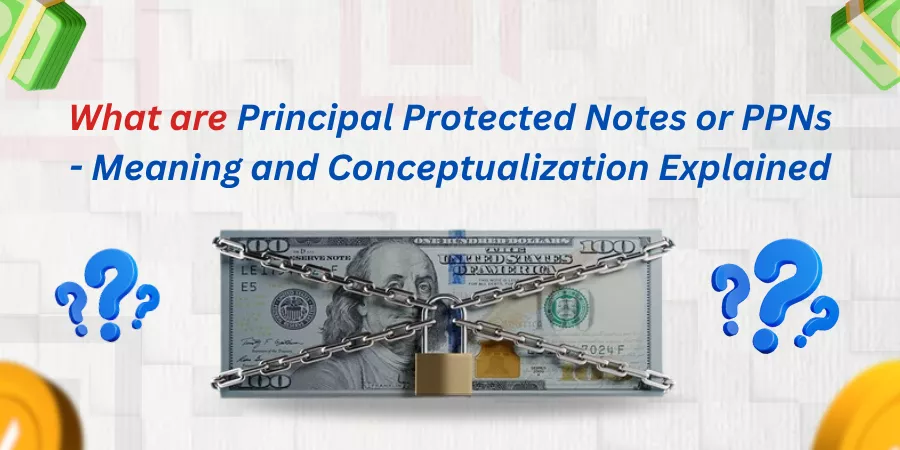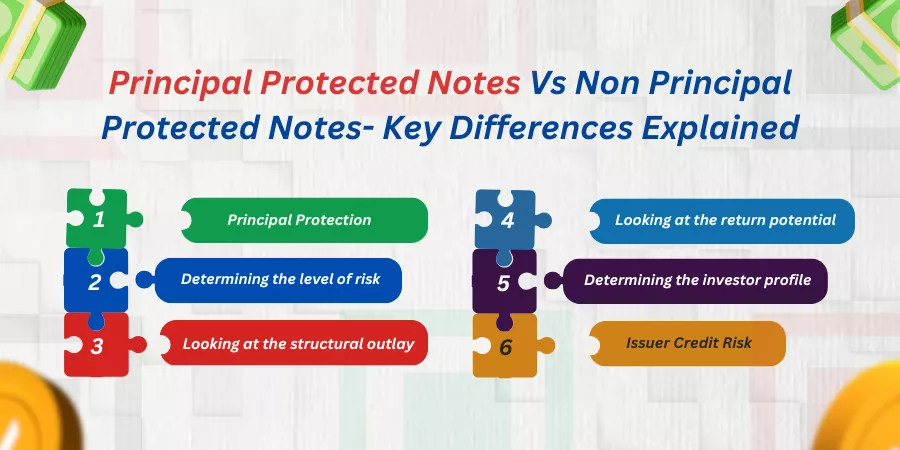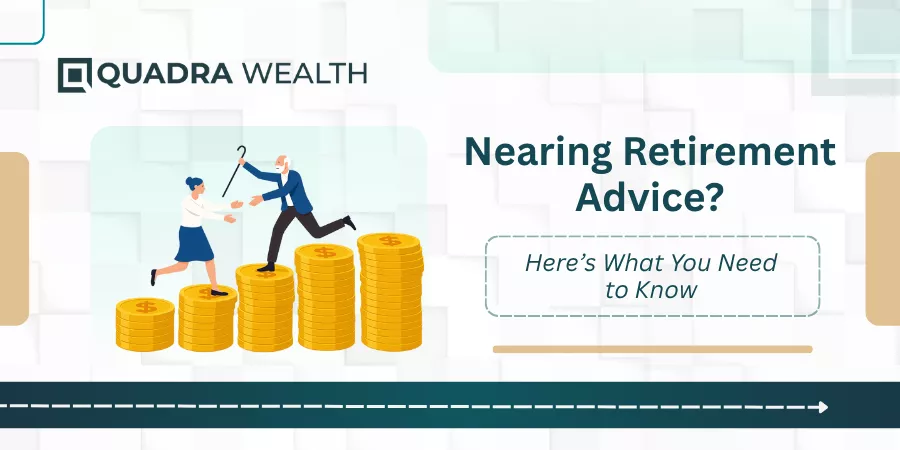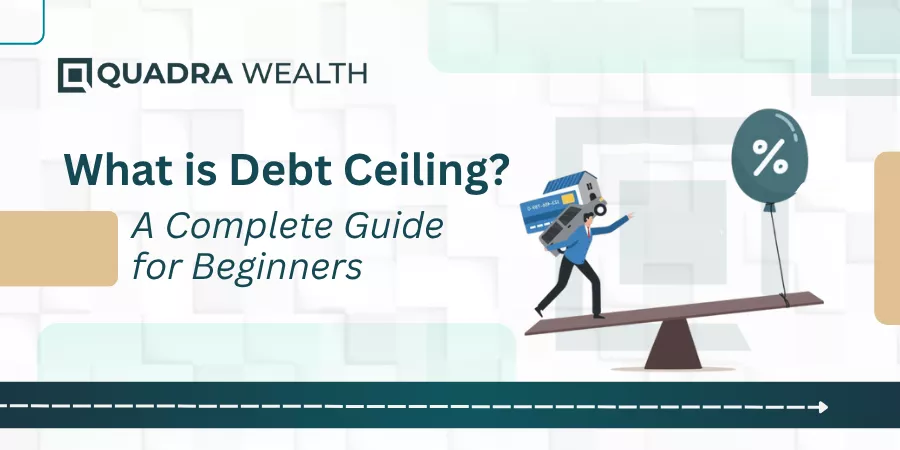Introduction
What kind of an investor are you? Do you prefer capital conservation as the first criteria for your investment plan? Or would you love to take in that adrenaline rush of building your income portfolio by plunging in with investments that go through equity-related volatility?
Principal Protected Notes are meant for capital-preserving investors as they get their initial investment money even if the market performs poorly. On the contrary, non-principal protected notes provide fabulous returns on investment while the market fares well but might not offer you capital preservation if the underlying stocks of the notes perform badly.
On the same parlance, let us discover the key points of differences covering Principal Protected Notes Vs Non Principal Protected Notes. We would first give you a border overview of the revolving specifics and then proceed to differentiate between the two.
Helping you get started here:
What are Principal Protected Notes or PPNs- Meaning and Conceptualization Explained

Principal Protected Notes are structured notes that guarantee investors an exact return of capital by the end of the tenor of the investment plan. The PPNs are notes that can also comprise traditional bonds, corporate mortgage bonds, real estate capital-protected equities, and so on.
However, despite the volatile conditions of the market these assets are exposed to, the investors do not lose their principal sum at the end of the term period the PPNs are backed with.
However, if the credit-issuing company defaults or signs up for insolvency, then investors might lose the entire portion of their capital wallet. Therefore, you should look for the credibility of the product issuer before you purchase PPNs issued by the firm as such.
PPNs might provide moderate or lower-edge returns such as interest earnings or coupon payments. These work more like fixed-income securities or bond options as such.
What are Non Principal Protected Notes or NPPNs- Meaning and Conceptualization Explained
Non Principal Protected Notes or NPPNs are structured notes that do not guarantee investors a return of capital at the end of the tenor period. Here, the notes comprise a fixed bond component and a variable derivative component that make them hybrid securities in the marketplace.
The notes are attached to linked-in assets like equity shares, ETFs, or currencies. If the underlying assets’ performance remains good, investors receive better yields as returns on investment. The yields are far more exponential as compared to traditional bonds or fixed-income securities.
However, if the underlying assets of NPPNs do not perform well, then the returns on investment might plummet for the investors. And, the investors might lose a portion of or the complete value of their investment if the market faces severe economic downturns.
ELNs and Auto Callable Notes are classic examples of Non Principal Protected Notes or NPPNs.
Principal Protected Notes Vs Non Principal Protected Notes- Key Differences Explained

These are the key points of differences covering Principal Protected Notes Vs Non-Principal Protected Notes. Helping you through with a run-down into the same:
Principal Protection
Principal Protected Notes or PPNs enjoy a maximum degree of principal protection for investors. Similar to bonds, the investors receive capital-based interest payouts or coupons from time to time. And, they would receive their capital amount at the end of the tenure period of these PPNs. The best part about PPNs is that investors receive their capital investments even if the underlying assets do not perform well in the markets.
Whereas, with respect to Non-Principal Protected Notes or NPPNs, the investors do not get a guarantee on their return of capital at the end of the tenor of the investment. These structured nites might have underlying assets like equity shares, commodities, or currencies. When the assets perform as expected, then investors receive a good return on their investment plus their capital sum.
On the contrary, if the underlying assets of NPPNs do not fare as expected, then investors might receive moderate returns on their investments. Plus, they might lose a portion of, or their entire capital wallet, depending on the severity of economic downturns or market slumps.
Determining the level of risk involved
PPNs operate on a lower-risk lower-returns operating memorandum. The investors receive moderate earnings in the name of interest payouts or coupons. At the end of the term asset, they get their capital sum back. The PPNs work similar to bonds or fixed-income securities and they highly appeal risk risk-averse or traditional investors.
Whereas, the NPPNs offer higher returns of capital if the underlying assets of the notes perform well in the market. Here, the returns on investment or ROI might exceed that of traditional bonds or fixed-income securities. However, if the markets do not perform well, then investors usually do not receive returns on their capital investment. They may also lose a portion of or the entire value of their capital investment. The NPPNs therefore operate on a higher-returns- higher risks operandum indeed.
Looking at the structural outlay
PPNs comprise a mix of traditional bonds, corporate bonds, and high-paying securities to give investors a moderate rate of return along with principal protection at the end of the tenure period, the investment portfolio is backed. The PPNs might contain future options that protect the capital investment of investors by allowing the futures or commodities to work in simulated or more protective market environments.
Whereas, with respect to NPPNs, the notes comprise underlying assets that are mainly derivatives like equities, shares, or future-based commodities. The underlying assets are exposed to the direct volatility of stock markets and the potential returns are based on market movements. The investors can therefore get better returns if the markets perform well.
On the contrary, if the markets face economic downturns like a global recession or a stock market crunch, then investors not only have to compromise on their returns on investment but also lose a portion of or entire value of their capital investment.
Looking at the return potential
A PPN offers a comparatively lower rates of returns because of the principal protection aspect added to it. Although, the note’s returns are linked to the performance of a basket of assets the note is linked with, product issuers usually put a tab or cap limits on the investment’s returns as such.
Whereas, with respect to NPPNs, the notes provide higher returns of investment as the underlying assets of the notes are fully exposed to the volatile market conditions that apply to stocks or equity.
The investors can garner higher returns on investment if the going is good and at the same time suffer huge losses if the assets do not perform as expected in the market.
Determining the investor profile
For PPNs, this is an investment option that is more suitable for conservative investors or for those of you who belong to the older school of thought indeed. The investors here get a reasonable market exposure wherein the returns of the notes are primarily linked with. At the same time, the PPNs offer guarantee of a 100% principal protection with respect to the investor’s capital investment as such.
Whereas, with respect to NPPNs, this is an investment option that is more suitable for investors who have higher risk tolerance ratios. Here, the investors want to see higher growth or returns of investment. Therefore, they do not mind taking risks in the market over even losing their initial capital investment.
In a nutshell, the NPPN investors are willing to lose their investment in exchange for higher potential returns on investment perse.
Issuer Credit Risk
Although PPNs are 100 percent capital protected, there still remains a significant risk of the product issuing firm going bankrupt or signing up for insolvency. In this scenario, the investors might lose a significant portion of their initial capital investment.
Investors for NPPNs are not only subject to credit issuer’s risk but also subject to market risks or capital loss risks to a greater extent. Therefore, this is an option that is meant for more experienced and risk-tolerant investors who know the nuances of playing under different market conditions to see their notes grow.
The Bottom Line
In a nutshell, PPNs work under a risk-minimum environment wherein investors expect stable rates of return with 100% cap protection.
On the contrary, NPPNs work under a high market volatility environment, wherein investors are mentally prepared to pledge their capital investment over earning higher returns.
Whether you want to invest via NPPNs or PPNs, you must read the offer or policy documents carefully while investing.
What are your thoughts on this? Do mention it in the comments below!
Frequently Asked Questions or FAQs

What is a principal protected note or a PPN?
Answer: A principal-protected note or a PPN is a type of structured note that typically comprises bonds, commercial mortgages, govt-backed securities, and other principal-protected assets so that the investor can get a minimum return on his capital sum camouflaged with the return of principal amount at the end of the term of the PPN.
Define a non-principal protected note or an NPPN.
Answer: A non-principal protected note is a type of structured note that does not guarantee the investor his principal back. This is primarily because the note is linked with derivative assets like equity shares, commodities, futures, or currencies.
Here, the performance of the underlying assets determines the dividend amounts or interest payments the investor would get. The return capital also is based on the performance of assets that get linked to an underlying NPPN.
Why do traditional investors prefer PPNs as compared to NPPNs?
Answer: Traditional investors prefer PPNs over NPPNs because the investors will receive their capital repayment regardless of the performance of equity index based assets that the notes are linked to. Here, the investor gets interest payouts or coupons similar to fixed income securities. A PPN issuance tied to municipal bonds or Govt-aided treasuries can be a classic example of a principal protected note.
How do product issuers structure an NPPN?
Answer: The investors trade their unsecured debt amount to returns equal to their impending financial obligations. This way, they tailor high-paying NPPNs to get better returns of capital over their initial investment sum. The calculation algorithms are determined by wealth managers or financial advisers who are veterans in the field of finance or investments. The NPPN gets its structure designed at its inception stage itself and the market movements are monitored by product issuing firms or independent practitioners accordingly.
As an investor, you must understand the benefits and downsides of the term of the note to know how your notes work and understand our products better.






